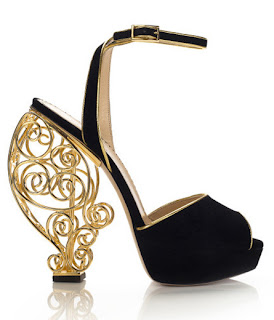Paul Smith takes a bow (or
a fist pump?) at the end of his show in Tokyo
last night. Photo: Getty Images
Make your way past the
street style photographers, the greeters handing out the latest copy of WWD,
the video of Jessica Stam being photographed by Terry Richardson atop a
Mercedes-Benz, and the floor-to-ceiling ads for Maybelline featuring the faces
of Charlotte Kemp Muhl and Christy Turlington, and you’ll finally arrive at the
main runway. No, this isn’t New York Fashion Week—rather, it’s Tokyo’s new and improved
Fashion Week.
The biannual event, which
kicked off yesterday, nearly didn’t make it. Just seven months ago Japan
Fashion Week’s fall 2011 was canceled. It was scheduled to start just a
few days after the devastating earthquake and tsunami that hit the Asian
country back in March and aside from the obvious tragedies, and the somber mood
that spread across the country, sewing and production plants were drastically
affected and it wasn’t quite clear if designers would even be able to make a
spring ’12 collection. Then, in July, IMG took on the fledgling Japan
Fashion Week. In addition to the slew of big-name sponsors (besides Maybelline,
which signed a three-year sponsorship contract, DSL and ShopStyle are
on-board), the event received a new name: Mercedes-Benz Fashion Week Tokyo.
Call it a superficial change, but it aligns this Fashion Week with several of
the other upper-tier Fashion Weeks, including New York’s
and Miami’s.
“We are expecting more
connection with fashion weeks all over the world,” says Akiko Shinoda, Japan
Fashion Week Organization’s director of international affairs, of the effect
this re-branding will have. Indeed, it seems to already have had that effect: Paul Smith kicked off the festivities with his very first
runway show in Japan
Sunday afternoon (it was also the first time he showed his men’s and women’s collections
at the same time). That the British designer joined the Tokyo
line-up wasn’t a surprise to those who know him well; Smith has been visiting Japan since the early 1980s, and according to
Shinoda, “He came to Japan
by himself right after the disaster to support Japan, even though the British
government did not want him to go. We think that his show in Japan is to
encourage the Japanese industry.” Indeed, as Smith explains, he named the show
I Love Japan
“to give encouragement after a difficult time. I’ve been coming [to Japan] for
so long, my heart…I just had to come. It was just so important to me.”
As to whether this will
attract more foreigners—designers, buyers, and press alike—remains to be seen.
Japanese label Etw. Vonneguet, which went ahead with its scheduled fall ’11
presentation in March, has seen a change in the number of ticket requests from
those outside of Japan, with designer Olga noting, “All I can say is I totally
understand the situation.” Shinoda, meanwhile, is hopeful: “We are getting more
attention, especially on our website.”
Even if this week
introduces the many things that have come to define the big four Fashion Weeks,
it all comes down to the clothing. And for those designing, they don’t think
that a new name will ultimately have too much impact on what is shown on the
runway during Mercedes Benz Fashion Week Tokyo. “Nothing will change,” says
Olga of the impact the added attention will have on her collection, adding,
“even if our name of platform has changed.”










